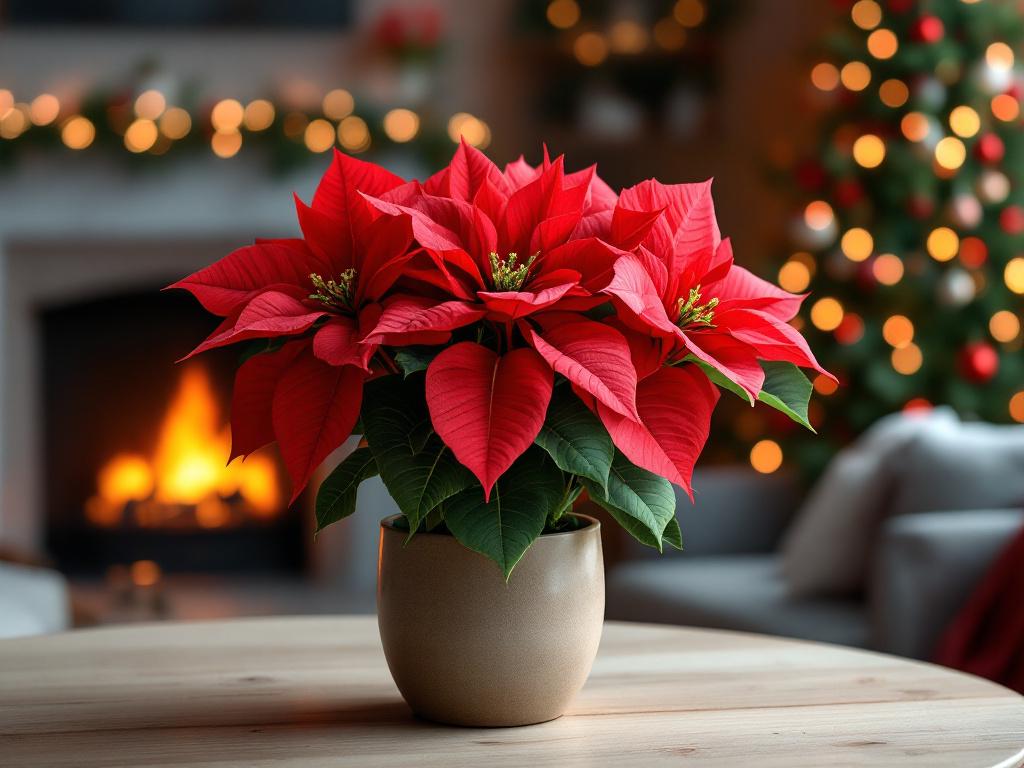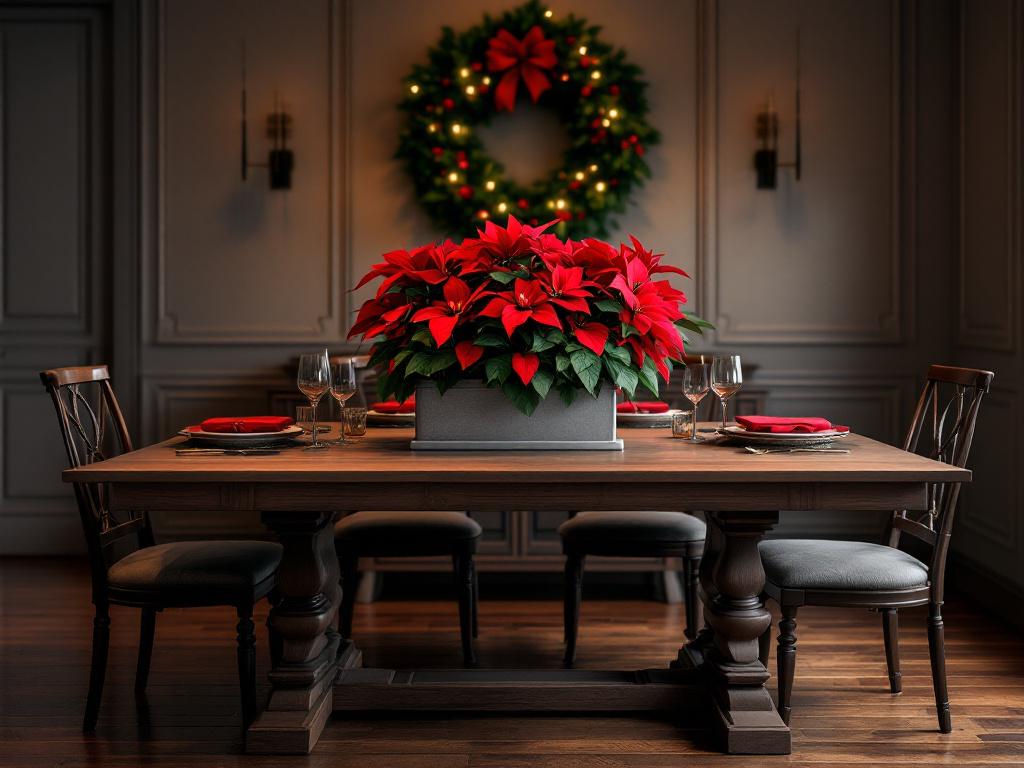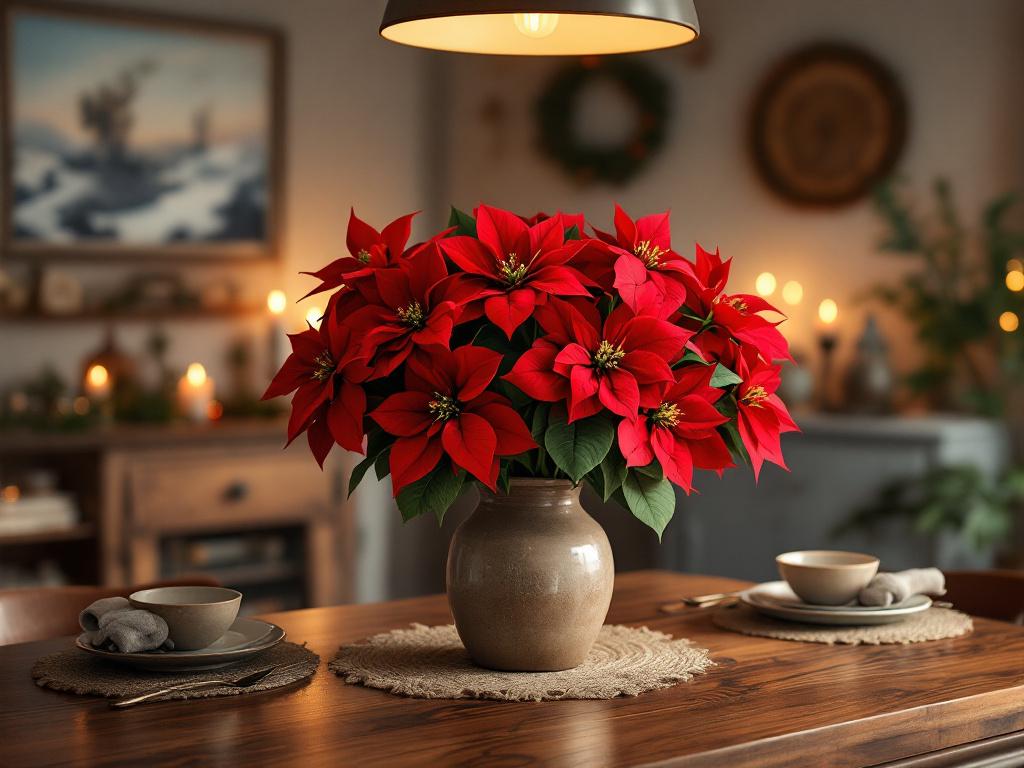
Poinsettias, with their vibrant red and green foliage, have become one of the most recognizable symbols of the holiday season. Native to southern Mexico, these plants are scientifically known as Euphorbia pulcherrima, which translates to “the most beautiful Euphorbia.” Historically, the poinsettia was used by the Aztecs for various purposes, including its vibrant bracts for dyeing textiles and medicinal uses. The association with Christmas began in the 17th century when Franciscan priests cultivated the plant, bringing it to wider attention in the region. The enduring popularity of poinsettias during the festive season stems from their striking appearance and adaptability to indoor environments.
Poinsettias are not limited to a single species; they belong to a genus that includes more than 100 varieties. The most well-known variety is the traditional red poinsettia, often displayed in homes and public spaces during the holiday season. However, these plants also come in a wide range of colors, including white, pink, and marble, providing options that suit any decorative theme. The plant’s unique leaf structure, where the vividly colored ‘petals’ are actually bracts surrounding small yellow flowers, adds to its visual appeal. By understanding the origins and varieties of poinsettias, one can appreciate not only their beauty but also their significance as a cherished holiday decoration.

Additionally, poinsettias symbolize goodwill and joy, often given as gifts during the holidays. Their bright colors and festive appearance make them an essential component of seasonal decorations in both residential and commercial settings. Caring for poinsettias can be a rewarding experience, ensuring that they remain healthy and vibrant throughout the festivities. By providing the appropriate conditions for growth and understanding their requirements, one can enjoy these plants well beyond the holiday season, allowing their beauty to bring cheer throughout the year.
Optimal Growing Conditions for Poinsettias
To ensure that poinsettias flourish during the holiday season, it is essential to recreate conditions akin to their native tropical environment. One of the primary factors influencing their growth is temperature. Poinsettias thrive in a warm indoor climate, ideally between 65°F and 75°F (18°C to 24°C) during the day. At night, temperatures should not dip below 60°F (15°C) to prevent stress and leaf drop. It is crucial to keep these plants away from drafts, sudden temperature changes, and cold windows, as these factors can adversely affect their growth.

In addition to maintaining optimal temperatures, humidity levels also play a significant role in the health of poinsettias. A relative humidity of around 50% or higher is recommended. Dry indoor air, especially during winter, can lead to wilting and compromised plant health. To combat this, consider using a humidifier or placing a tray of water near the plants, which helps to increase ambient moisture levels. Regularly misting the leaves can further assist in maintaining the necessary humidity.
Light requirements are another essential aspect of poinsettia care. These plants prefer bright, indirect sunlight, which helps them produce vibrant bracts and foliage. A south or west-facing window is ideal for providing the right amount of light. However, direct sunlight should be avoided, as it can scorch the leaves. If natural light is limited, consider using artificial grow lights to supplement exposure. Lastly, establishing an appropriate watering routine is crucial. Poinsettias should be watered when the top inch of the soil feels dry. It is essential to strike a balance, as both over-watering and under-watering can lead to root rot or dehydration, respectively.
Common Poinsettia Care Mistakes and How to Avoid Them
Poinsettias are cherished during the holiday season for their vibrant red and green foliage, but many plant owners unknowingly make mistakes in their care that can lead to lackluster displays or even plant decline. One of the most prevalent errors is improper watering. Overwatering is a common pitfall, leading to root rot, while underwatering can cause the leaves to wilt. A practical solution is to ensure that the pot has drainage holes, allowing excess water to escape. It’s vital to check the soil moisture weekly; it should be dry to the touch one inch below the surface before watering again.

Another frequent mishap involves inadequate lighting conditions. Poinsettias thrive in bright, indirect sunlight. Insufficient light can result in leggy growth and fading colors. To avoid this, place your plant near a window where it can receive ample light but protect it from harsh direct sun that might scorch its leaves. Additionally, consistent temperature and humidity play crucial roles in a poinsettia’s health. Extreme temperature changes or cold drafts can stress the plant, leading to leaf drop. Maintain a stable environment, ideally between 60 to 70 degrees Fahrenheit, and use a humidifier if your indoor air is particularly dry.
Pest management is often overlooked, with common issues including aphids and whiteflies which can seriously affect the health of your poinsettia. Regularly inspect the leaves for signs of infestation, such as sticky residue or visible pests, and treat infestations promptly with insecticidal soap. By recognizing these common mistakes and implementing straightforward solutions, you can significantly enhance the health and beauty of your poinsettias. This proactive approach ensures your holiday display remains vibrant and cheerful throughout the entire season.
Extending the Life of Your Poinsettias: Post-Holiday Care Tips
Once the holiday season has concluded, many individuals may question how to best care for their poinsettias to maintain their vibrant beauty and health beyond the festivities. Transitioning your poinsettia into the spring and summer months requires specific steps that ensure continued growth and potential blooms for the following holiday season.

One of the first considerations is repotting. Poinsettias thrive when they have adequate space for their roots. After the holiday season, inspect your plant for root outgrowth. If the roots are circling the pot and appear compact, it may be time to repot into a slightly larger container, ideally one or two inches bigger. Use a high-quality potting mix that allows for proper drainage, as soggy roots can lead to decline.
Pruning is equally crucial during this period. Once flowering has ceased, trim back the stems to about six to eight inches tall. This not only encourages new growth but also helps reshape the plant for optimal aesthetics. Ensuring that your poinsettia receives sufficient light is important, too. A bright, indirect light source will support the plant’s growth and vigor. Avoid placing it in direct sunlight, as this can do more harm than good.
To encourage blooming in the upcoming holiday season, you need to regulate the light exposure. Starting around October, ensure the plant receives 14 hours of uninterrupted darkness each night. This light manipulation signals the plant to produce flower buds. Additionally, regulate watering; watering should be frequent but allow the top inch of soil to dry out between waterings to prevent over-saturation. Following these post-holiday care tips will help maintain your poinsettias, thereby extending their life and enriching your home décor for many seasons to come.

